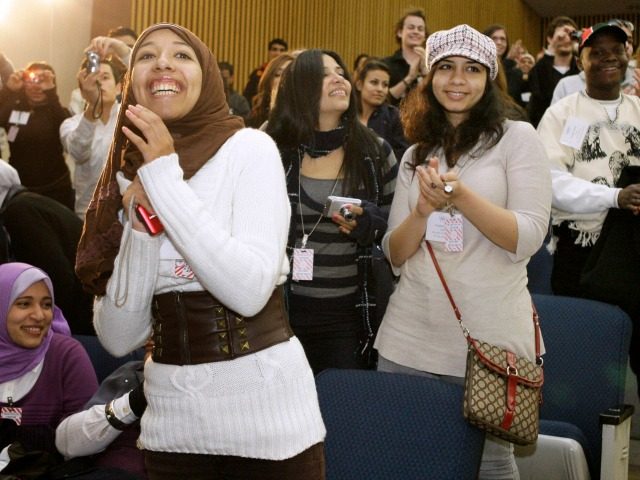Roughly 304,000 foreigners arrived at U.S. airports and seaports legally in 2015 but then overstayed their visas until at least January 2017, according to a new report by the Department of Homeland Security.
The numbers show that more than half of the nation’s new 2016 illegal aliens arrived legally at airports and seaports, instead of sneaking across a land border, said Steve Camarota, a data expert at the Center for Immigration Studies. The overall inflow was about 550,000 illegals in 2016, he said.
Roughly 1.47 percent of visitors overstay their visas, but many leave a few months later. For example, 740,000 of 50 million 2016 visitors overstayed their visas in 2016, but 2o0,000 went home by December 2016, leaving roughly 540,000 of them illegally living in the United States on January 10, 2017.
The 2015 and 2016 overstays added up to 850,000 illegal immigrants in early 2017. Overall, overstays are thought to comprise roughly 40 percent of the widely accepted claim of 11 million resident illegals.
Agency officials are testing a new system to track the departures of visitors and so identify people who illegally overstay their visas. The tracking system was put on a fast track to deployment by President Donald Trump in February, alongside his push to extend the nation’s walls and fences along the border with Mexico.
During the tenure of former President Barack Obama, his DHS appointee did little to track or reduce the number of people who overstayed their visas.
Roughly one-in-20 recent foreign students and “exchange visitors” overstayed their 2016 visa for at least a short period, said a press statement from the agency.
This year’s report also includes visitors who entered on a student or exchange visitor visa (F, M, or J visa). Of the 1,457,556 students and exchange visitors scheduled to complete their program in the United States in FY16, 79,818 stayed beyond their authorized window for departure, resulting in a 5.48 percent overstay rate. Of the 79,818, 40,949 are suspected in-country overstays (2.81 percent).
Many students and the “exchange visitors” are allowed to legally work before their visa expires. “It would be common sense to assume they are probably continuing to work,” a DHS official told Breitbart. But, he added, “I don’t think we have any kind of aggregate data [for the total of number who are working… it would be a hard figure to calculate.”
If two-thirds of the long-term overstay illegals are illegally holding under-the-table jobs in the United States, the long-term overstays from 2015 would have added 200,000 white-collar and blue-collar illegal immigrant workers to the labor market in one year.
In turn, those 200,000 new overstay illegals added up to one foreign worker for every 20 young Americans who graduated in 2016 to search for decent jobs. Roughly 4 million Americans graduate shool or college each year and begin looking for decent jobs to help them get married, buy a house and raise a family.
But the federal government forces the new American workers to compete for jobs against roughly 1 million legal immigrants, plus roughly 1 million new foreign contract workers, plus the fluctuating inflow of roughly 550,000 illegal immigrants. The huge inflow of legal and illegal extra workers and consumers cuts Americans’ wages, drives up real estate prices, and cuts high-tech investment, but increases profits for company owners and investors.
That inflow of illegals is partially offset by the routine departure or repatriation of many illegals, leaving the nation with a population of just over 11 million illegals. Roughly 8 million of the 11 million are working in jobs.
The new overstay report is part of an increased push by reformers to keep better track of the movement of foreigners into and out of the country.
For example, officials are testing a “biometric” system at Atlanta airport to track the departure of tourists, business travelers, and contract workers, such as H-1B white-collar contractor workers.
Without the ability to track the departure of legal visitors, officials cannot gauge how many foreign people are overstaying their visas. Officials expect to receive up to $1 billion in visa-related fees over the next decade to build an exit-tracking system at the nation’s airports and seaports.
There is no process to track the expected departure of short-term visitors from across the U.S. land borders with Mexico and Canada. The number of people who cross the U.S-Mexico border each day for local shopping and business can be four times as many people who arrive by aircraft or ship, according to a DHS official.
Follow Neil Munro on Twitter @NeilMunroDC or email the author at NMunro@Breitbart.com

COMMENTS
Please let us know if you're having issues with commenting.